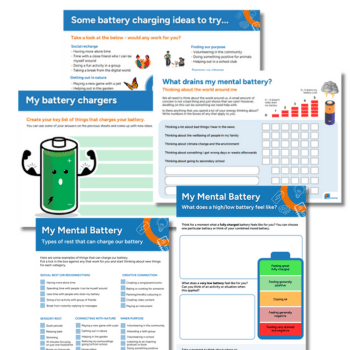Alternative provision – Making it work in today’s schools

Why partnerships are key to effective alternative provision and how Academy21 builds them through collaboration and flexibility…

- by Alessandro Capozzi
- Executive head of Academy21

Table of contents
Why partnerships should be at the heart of alternative provision
Find out how Academy21 is putting partnership working squarely at the heart of its online alternative provision from executive headteacher Alessandro Capozzi…
We spend a great deal of time at Academy21 discussing how to achieve mutual understanding and sustainable partnerships with the schools and authorities that need online alternative provision – and rightly so.
The benefits can be profound, not least on the learners at the heart of our work. We have, for example, worked with one alternative provision provider to complement their holistic, community-based provision with live academic lessons to fit around their schedule.
In all cases, you can build increased awareness, more tailored programmes and innovative approaches on the trust that only an effective two-way endeavour can provide.
Partnerships like these always take time to build. But there are a few key considerations that can make all the difference.
Make time upfront
Effective partnership working requires mutual understanding from the very beginning. It’s something that you can’t overstate when it comes to alternative provision arrangements.
This is why we always start by taking time to understand the context the commissioner is in, and the local needs of their setting.
We’ve seen the power that discovery and planning meetings can have in yielding understanding of commissioners’ requirements and desired outcomes for students.
This will form the foundation of a personalised programme that gives the student the most appropriate support from day one.
Anticipate needs
Next, we’ve found that anticipating a commissioner’s needs is crucial for helping them secure buy-in from students and their families. This way, everyone can be confident about what the provision should achieve.
To do this well, however, we can’t assume that every partner will need or want the same forms of support. We provide welcome packs, live inductions, parent information, demos of our system and sample videos. These all aim to help school leaders, who want a student to join Academy21, explain the decision they’ve made to others.
Importantly, this includes showing how our live teaching works, often via in-person visits by our partnership colleagues to the school.
This is an investment in the relationship, but also provides important insights into what that community may need from us.
Be flexible
Being attentive and responsive to emerging needs is key when building successful partnerships with schools to support vulnerable learners.
At Academy21, our teaching is relational and adaptive, allowing us to pivot and overcome challenges in the classroom so that students are successful.
We ensure that we place every student in the right group for their individual ability, and that lesson times fit the partner school’s placement and timetabling needs.
These flexibilities might sound simple, but they can make an outsized difference to the quality of our collaborations because of how they remove friction.
Communicate proactively
Another critical aspect of effective partnerships is the quality of reporting. Commissioners need to be kept up to date and understand how their investment in the child is progressing.
In environments where investment and funding can be scarce, being mindful of the questions and monitoring your partner must work through really matters.
It’s about trying to imagine what they need to know, and what they will be asked. In our experience, this has led to enhanced lesson-by-lesson and daily attendance reports, as well as the daily progress updates entered by teachers.
This has prompted us to place a greater focus on student recognition and celebration – both in terms of how we share feedback, and by introducing more formal certification and praise.
Our prioritising of communication extends to rapid reporting of any welfare and safeguarding concerns, so that students’ wellbeing comes first.
With clear mechanisms and key contacts in place, there’s much less friction if any issues need to be resolved.
Such partnerships are crucial for navigating the resourcing, expertise and social challenges the education sector faces. The key now is to devote time and show willingness to adapt, communicate more and genuinely try to understand each other’s needs.
Why alternative provision should be intervention, not destination
Alessandro Capozzi explains the role that online education can play in building a new model for alternative provision…
In recent dialogue around alternative provision, the concept of it being ‘a bridge back’, a ‘two-way road’ or a short-term intervention has been gaining traction.
Across consultations, thought leadership, policy discussions and day-to-day planning, it’s those qualities now being cited as to what effective alternative provision looks like.
In many cases, this makes sense. We want an education system that improves outcomes for young people and creates a sense of belonging.
This in part depends on providing alternatives that as many young people as necessary can access, while ensuring they’re able to remain connected to their communities.
A system that keeps young people using those alternatives for extended periods, however, or which denies access to students with more immediate needs, has a problem.
Capacity and innovation
For some young people, it may be that a longer-term placement is what they actually need. Yet for many, the ‘it’s an intervention, not a destination’ principle is a more laudable aim. It’s a more reliable way of ensuring that we prioritise their best interests and future aspirations.
People are doing some intriguing work into what a reformed alternative provision system might involve. This includes IntegratED’s Alternative Provision Quality Toolkit and growing recognition that alternative provision can offer some ready solutions.
If we’re to realise a new norm of inclusive, yet affordable ‘intervention’, then the system needs more innovation now. However, this will be challenging to deliver without significant investment in training and capacity for schools.
Digital technologies can play a major role in delivering this capacity. They make now the ideal time to consider how online learning could be integrated strategically across the wider alternative provision system.
Indeed, work on this is already underway. Scores of LAs now include online alternative provision that meets the quality assurance of their AP frameworks and directories.
The sector also now has a DfE-operated ‘Online Education Accreditation Scheme’. This is quality assured by Ofsted to ensure best practice and high standards in online teaching.
Plugging the gaps
The role of remote education is becoming more widely recognised for several reasons. Chief amongst these is quality. The best providers offer live, adaptive teaching which builds relationships and ensures that students – some of whom may have been disconnected from learning – are once again engaging via inclusive online tools.
Live online teaching can plug gaps quickly. Teachers can wield an array of tools for modelling, scaffolding and assessment purposes, and give personalised, actionable feedback. The impact of this can be profound.
Another key advantage is that remote education is flexible, enabling it to fit around students’ existing placements or wider needs.
At Academy21, we enable students to access live lessons at multiple points during the day. More importantly, this flexibility generates capacity.
Our timeframes between induction and participation in live taught classes can span days, rather than weeks or months, as is so often the case with alternative provision. This is something that’s vital if early interventions are needed to address issues quickly.
Then there’s the portability. Online teaching needn’t require a dedicated location. Many Academy21 students will join lessons from their ‘home school’ site, or somewhere else within their community.
Whether learning at home while recovering from illness, or while regaining confidence for anxiety-related reasons, online learning can serve as a constant that provides them with a sense of stability and agency, as they choose their preferred timings and the arrangements that work best for them.
Finally, there are the added capabilities of technology-assisted school supervision. Through our remote education, we can ensure schools have all the monitoring information they need to check on their young people, complete with bespoke dashboards, lesson-by-lesson insights into every student and full access to the resources they’re using.
This level of detail lets schools really understand how students are doing, adapt where needed and above all, recognise their success – all of which will form the foundations of successful reintegration.
Alessandro Capozzi is executive headteacher at Academy21.










